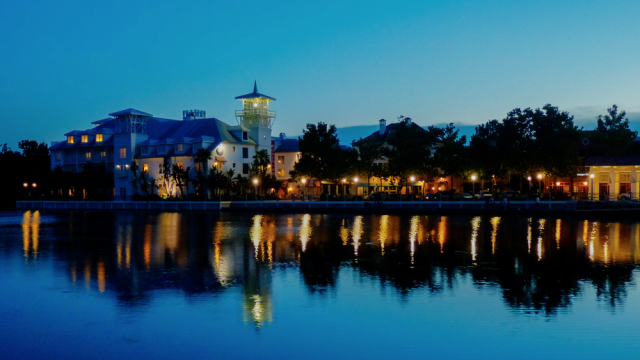It’s been exactly two decades since Celebration, Florida, broke ground in 1994, a major anniversary for a community that enjoyed a massive amount of media attention when it emerged. Yet we don’t hear much about Disney’s foray into real estate lately, apart from the odd fire.
The Town of Celebration isn’t really a town, in truth. It’s technically a census-designated place, which is to say, an unincorporated community. The “town” of, today, almost 8,000 people, is situated on 11 square miles of carefully engineered Floridian swamp. It is, in the simplest sense, just another suburb.
But thanks to its association with Disney and the Klieg lights of the national media, Celebration is also more than a suburb. It’s a paradigm for how contemporary Americans view utopian projects: With a huge amount of suspicion.
A Fresh Start In a World Gone Wrong
Ironically, Celebration was designed as an antidote to what Disney World itself had caused in Central Florida — what Andrew Ross, in The Celebration Chronicles, calls a “purgatory of fast growth and fast food.” Instead, Celebration would be “yet another fresh start in a world gone wrong.”
It borrowed heavily from a burgeoning young movement called New Urbanism, pioneered by a duo of Miami architects the town of Seaside just a few years before. Without getting into specifics, the idea was simple: To combat the endless, creeping, invasive sprawl that had engulfed millions of acres of the U.S., planners would model their developments on the small towns of early America, with compact downtowns, walkable streets, diverse housing stock, and plentiful public spaces.

Downtown Celebration. Image: Rick Webb/CC.
In Celebration, rows of homes organised into “villages” cluster around a compact downtown, filled with civic buildings designed by some of the most famous architects in the world. You could buy an apartment for $US100,000 and live in the same neighbourhood as a guy who had bought one for $US600,000.
You could, in theory, walk to work (though few residents did). It had a great school. You could do all your shopping without driving and send your kids to a park down the street to play. It was, in the words of one ad, “the destination your soul has been waiting for.”
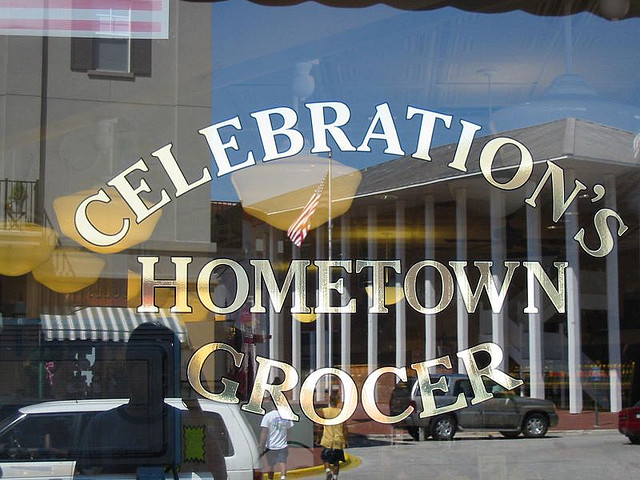
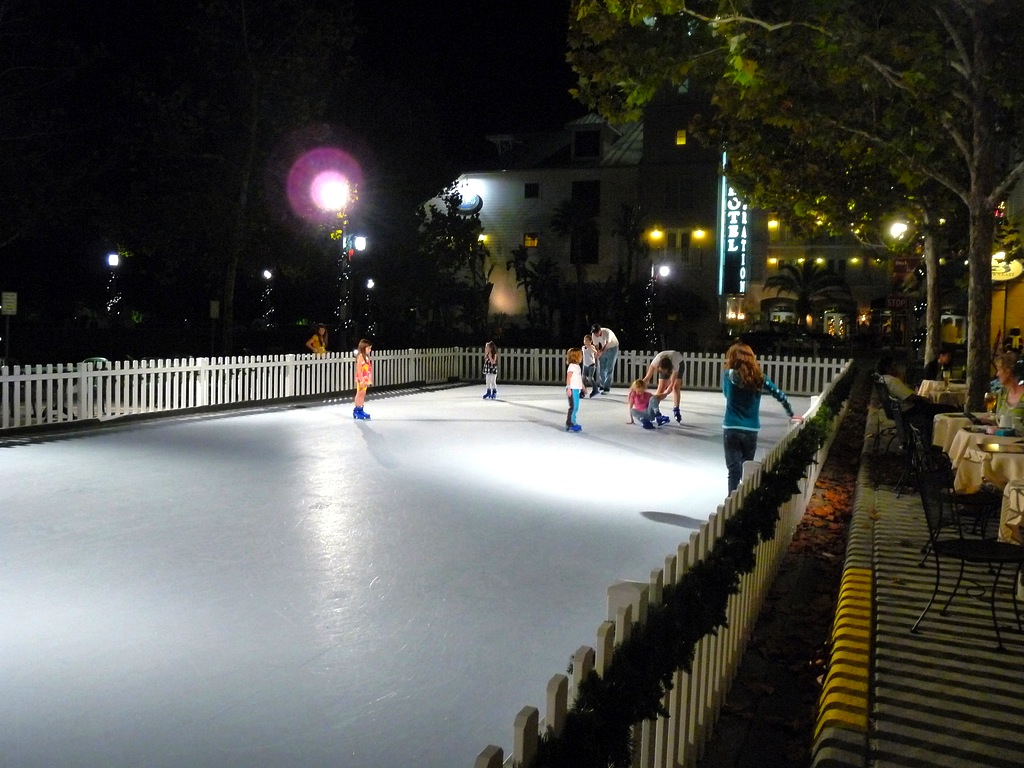
Top image: GreenNetizen/CC. Bottom image: Kids skate at one of Celebration’s annual holiday events. Image: Leigh Caldwell/CC.
From a planning perspective, New Urbanism and Celebration appealed to something pretty simple: Common sense. But it was interpreted by many as deeply artificial — partially thanks to the fact that planned communities smack of socioeconomic segregation.
Celebration didn’t help that case: The 2000 census revealed that the community was 88 per cent white, compared to the surrounding county’s 59 per cent white population. “Those efforts [to increase diversity in Celebration] have been a failure,” wrote The New York Times in 2001. “Even Disney officials say so.”
When Architecture Is “Creepy”
Everything in Celebration was by design, right down to its salespeople (who are called “cast members,” just like their Disney counterparts). Even its signage, designed by Michael Bierut of the New York graphic design powerhouse Pentagram, was carefully calibrated to project a kind of heart-warming familiarity.
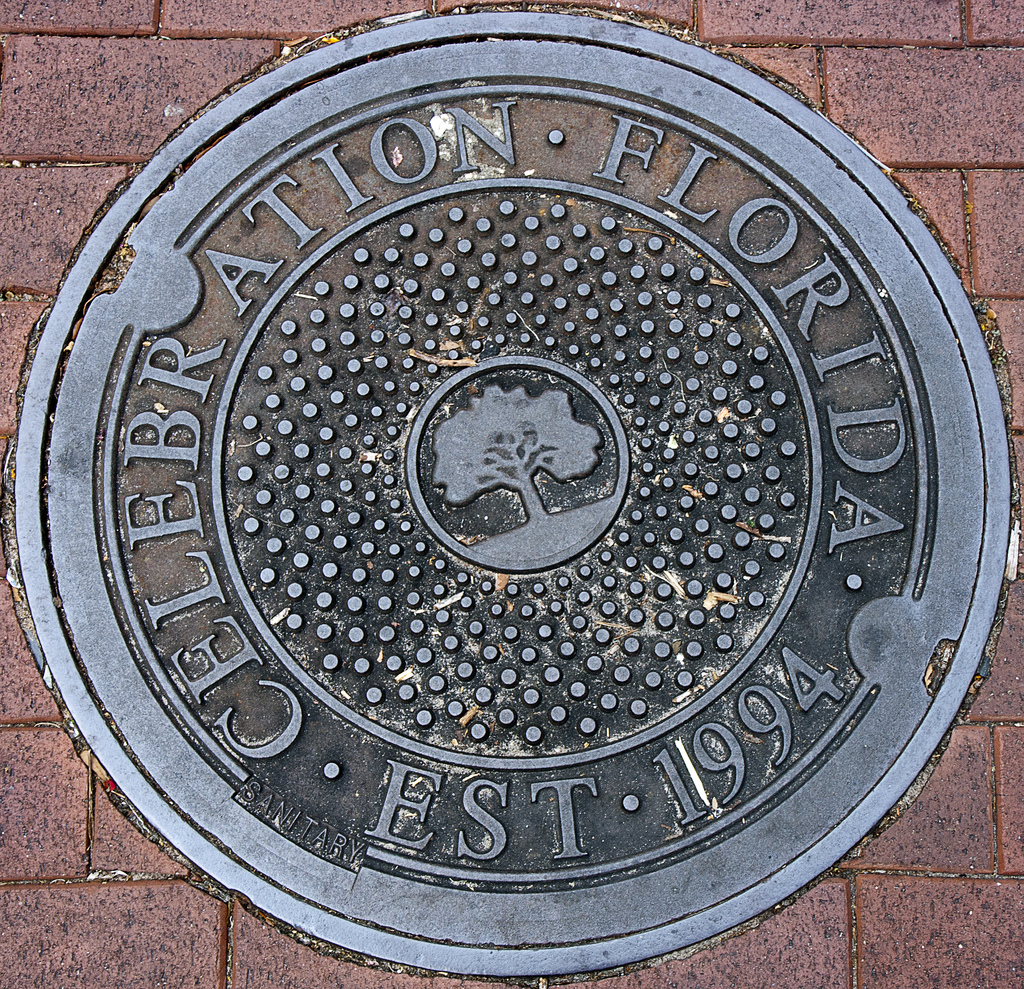
Image: Mitchell Gerskup/CC.
“We ended up designing not only street signs and shop signs, but manhole covers, fountains, golf course graphics, park trail markers, the sales center and even that pattern book for the houses,” says Bierut in a fantastic account of his work in Celebration in Design Observer almost ten years ago.
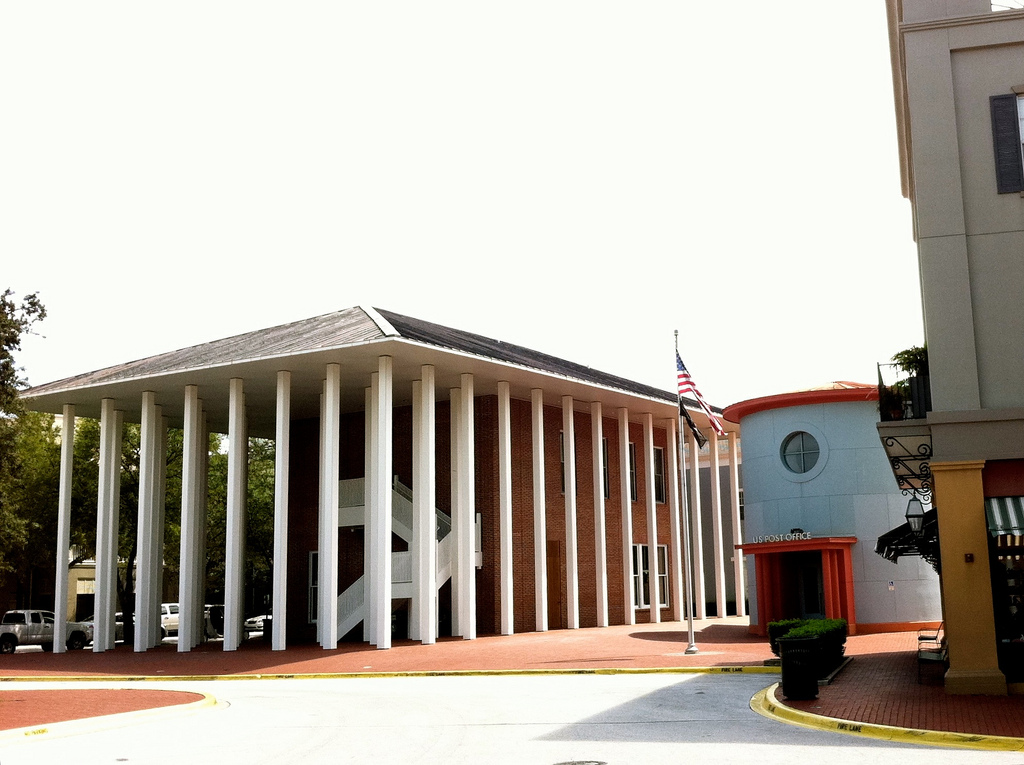
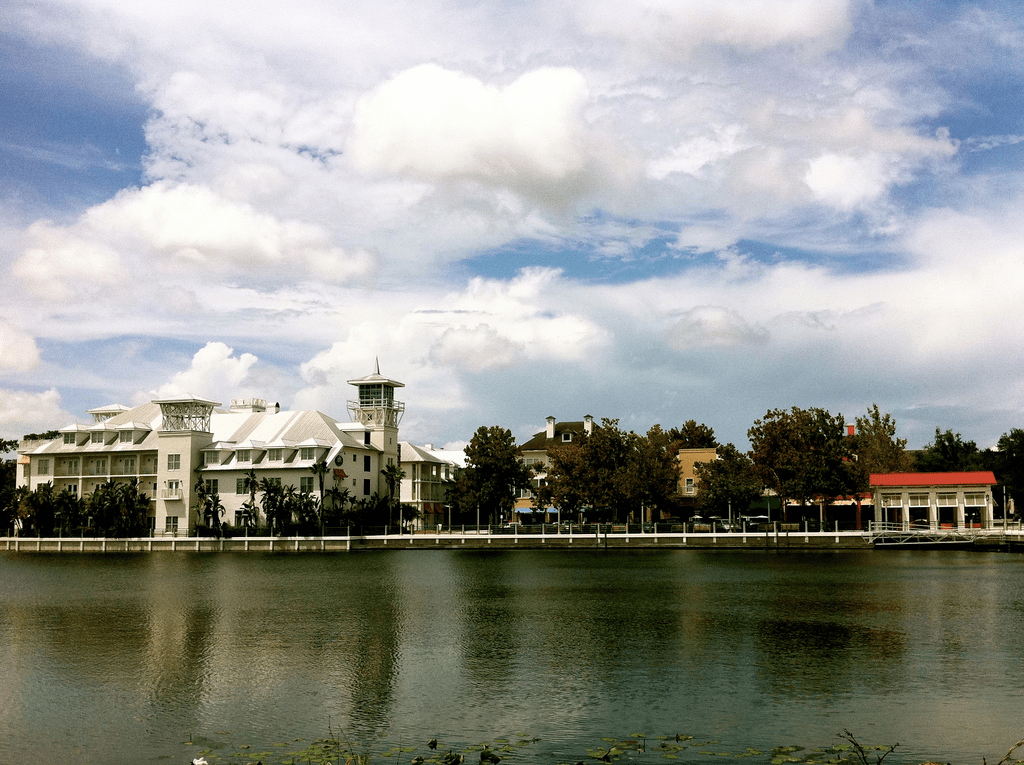
Image: Rick Webb/CC.
But Celebration’s attention to detail, in the eyes of many, came off simply as over-engineering. Architects spurned its “style book” of homes — Classical, Victorian, Colonial Revival — while urban advocates criticised its lack of “authenticity.” Bierut himself has a fascinating defence of the town, though, and one that rings true more than ten years after he made it:
But authenticity is a slippery thing. I live in a 1909 house that the realtor said was Victorian but I’d more accurately call Craftsman Style. Far from “authentic,” to me it looks like it was built by someone who had seen some pictures of Greene and Greene houses and thought one might look good in Westchester County. It’s surrounded by equally inauthentic hundred-year-old houses, all of which look swell today because they’re so old. New Urbanists often say that nostalgia is the Trojan Horse in which they deliver their radical planning ideas: small lots, mixed use, limited parking. Jacque Robertson once said in Celebration’s early days, “This will look great when all these trees grow in.” I suspect he’s right.
If it had been built just a few decades before, the artificiality might have played differently. In reality, Celebration’s synthetic architecture was no different than any of the other millions of McMansions popping up across the country.

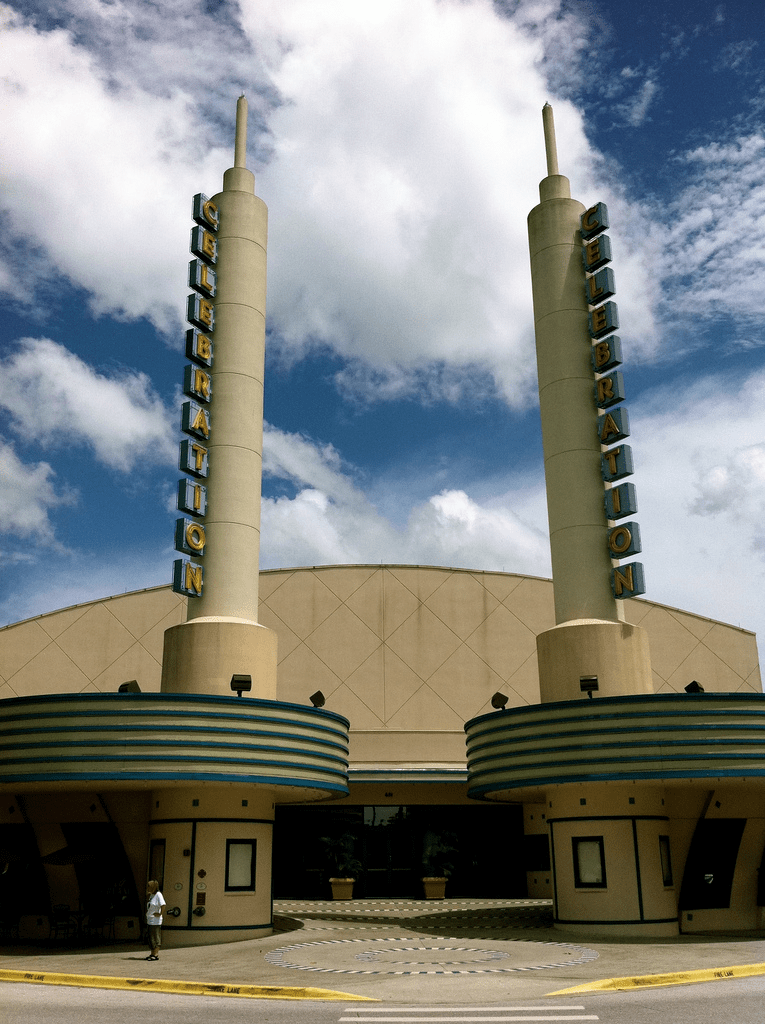
Top image: Mike Lutz/CC. Bottom image: Rick Webb/CC.
In fact, it was better designed than most. But at the tail end of the 20th century, Americans were becoming more and more suspicious of the promises of gated communities and simulacrum architecture — and instead, Celebration was often described as a terrifying vision of the future, a “Stepford-esque” nightmare of white clapboard and green lawns.
The Pixie Dust Wears Off
Other issues dogged Celebration as the years wore on, too. It emerged that the builders who had constructed the homes had been under-qualified and over-rushed, and nearly all of the buildings had problems within a few years. Foreclosures wracked the town after 2008, and in 2010, one resident in danger of losing his home committed suicide after a long police standoff. Only a few days earlier, Celebration had its first murder.
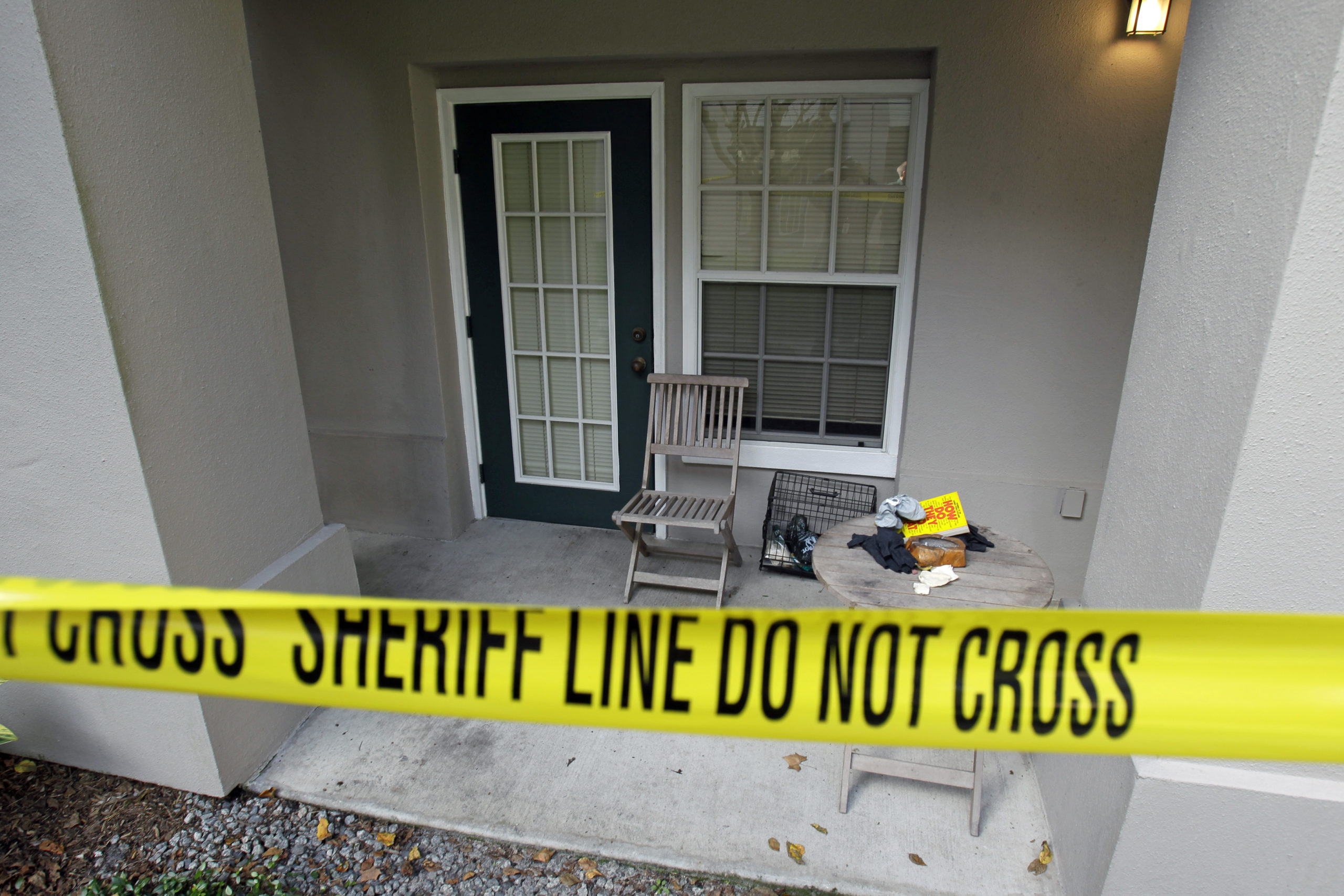
The crime scene of the first ever murder in Celebration. AP Photo/John Raoux.
Crime is part of any city’s life, and you’d think that, in a way, the influx of real-world problems would have quelled the public’s perception of Celebration as an artificial world. Instead, crime seemed to intensify it: Pixie Dust Loses Magic as Foreclosures Slam Utopian Disney Town, reported Bloomberg. Murder and suicide in Celebration, the perfect town built by Disney, said the Telegraph. The dark heart of Disney’s dream town: Celebration has wife-swapping, suicide, vandals … and now even a brutal murder, yelped The Daily Mail.
In the years since, Celebration has become a kind of punchline, for architects, planners, and homebuyers alike. It seems as though it rankles us to see the “American Dream” parroted so perfectly by a conglomerate that is seen, more and more, as a merchant of camp and artificiality.
The Power of Suspicion
Celebration, below its twee veneer and even below its shoddy craftsmanship, is a pretty sustainable idea. It has lessons for us to learn about how to quell the worst of the sprawl eating away at our country. And it is, by most accounts, a pretty good place to live: Public spaces, walkable streets, downscaled housing, and good schools, all within a compact downtown. Even its critics have to admit that it’s better than swampy, sprawling hellscape that lies just outside of it, dripping with strip malls and sweaty drive-thrus.
So why don’t we think of it as a success? For one thing, the mere whiff of utopia sets our teeth on edge these days. After a century of high-profile failures — from again.
Maybe the problem with Celebration isn’t its flaws, but the weariness with which the American public perceives the simple idea of utopia these days. After centuries of struggling to engineer a perfect society, utopia’s greatest enemy might turn out to be as simple as a creeping suspicion.
Lead image: Karl Davison/CC.
